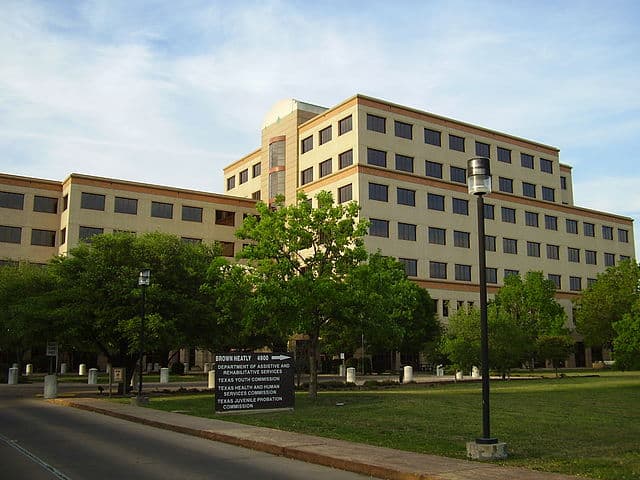
Last Wednesday, the Department of Health and Human Services, Office of Inspector General released the results of its long anticipated audit of Texas Medicaid orthodontic spending.
The feds conducted the audit because Texas Medicaid payments for orthodontic services rose from $6.5 million in 2003 to $220.5 million in 2010, an increase of more than 3,000 percent. By comparison, Texas Medicaid enrollment increased by only 33 percent during the same period.
The audit is available online.
The audit report primary finding is that “Texas did not ensure that the prior-authorization process was used to determine the medical necessity of orthodontic services under State Medicaid guidelines.”
The state response to the audit was that they had relied on Xerox’s assurances and the company was to blame.
OIG audit staff interviewed the State dental director, TMHP’s dental director and prior-authorization director, and other officials.
The Austin American Statesman has reported on the audit.
Executive summary
The executive summary provides a brief description of the audit major findings:
The State agency did not ensure that the prior-authorization process was used to determine the medical necessity of orthodontic services under State Medicaid guidelines. In addition, the TMHP dental director did not follow State Medicaid policies and procedures when determining the medical necessity of orthodontic services and reviewing prior-authorization requests.
These deficiencies occurred because the State agency did not ensure (1) that TMHP properly reviewed each prior-authorization request for medical necessity and (2) that the TMHP dental director followed Medicaid policies and procedures on determining the medical necessity of orthodontic services. As a result, TMHP may have approved requests for orthodontic services that were not medically necessary. Although TMHP failed to properly use the prior-authorization process to determine the medical necessity of orthodontic services, the State agency is ultimately responsible for contractor compliance.
A further report is pending that will contain the results from a medical review of a statistically valid sample of prior-authorization requests apparently to determine whether they met the threshold of medical necessity.
Highlights of the report:
Authorization process was “loose”
The TMHP dental director stated that the prior-authorization process was “loose” and depended on providers to determine the medical necessity of treatment. TMHP’s prior-authorization director, who oversees the prior-authorization process and prior-authorization analysts, stated that, on the basis of TMHP’s interpretation of its contract and on the fact that the Medicaid Manual did not require dental molds to be submitted with the provider request for prior authorization, not every request for prior authorization had to be reviewed by a licensed dentist.
Program “out of control”
She [TMHP prior-authorization director] also stated that the policy change in 2007 that no longer required providers to submit dental molds was the reason the program was “out of control.” Further, she pointed out that the State agency had known since 2008 that TMHP does not review x-rays for medical necessity. Thus, by automatically approving requests for prior authorization, TMHP did not appropriately research, analyze, evaluate, or ensure that all medical facts were considered and documented before determining medical necessity. This deficiency occurred because the State agency did not ensure that TMHP properly reviewed the medical necessity of each request for prior authorization.
TMHP dental director did not follow State policies in determining medical necessity
The TMHP dental director did not follow State Medicaid policies and procedures when determining the medical necessity of orthodontic services and reviewing prior-authorization requests.
Used professional judgement not Medicaid policy
When we asked the dental director what Medicaid criteria he used to approve prior-authorization requests, he responded that he did not use Medicaid criteria, but rather his professional judgment. Dentists, in using their professional judgment, may treat a moderate malocclusion; however, Medicaid allows reimbursement only for severe handicapping malocclusions. The dental director made final determinations of medical necessity on only about 10 to 20 percent of orthodontic prior authorizations, and he did so without using Medicaid criteria. This deficiency occurred because the State agency did not ensure that the TMHP dental director followed Medicaid policies and procedures.
Xerox says contract didn’t define “medically knowledgeable”
According to TMHP officials, the analysts that TMHP hired to process prior-authorization requests for orthodontic services were not medically knowledgeable. This deficiency occurred because the contract did not define “medically knowledgeable.”
Feds find no evidence HHSC performed due diligence
We agree with the State agency’s assertion that TMHP’s proposal and the contract required qualified clinical personnel to review requests for prior authorization. However, the State agency was responsible for providing oversight of its contract with TMHP. The State agency provided no evidence that it had performed its due diligence, such as checking the analysts’ credentials, in ensuring that TMHP’s analysts were medically knowledgeable.
State response to audit draft
State relied on company’s assurances and blames Medicaid dentists
The State agency agreed that the prior-authorization process was not used to determine the medical necessity of orthodontic services and that TMHP’s dental director was not using Medicaid guidelines to determine medical necessity. However, the State agency disagreed that TMHP’s deficiencies were due to a lack of State agency oversight. State agency officials said that they reasonably relied on TMHP’s assurances that it was complying with the State agency’s policies. The officials said that TMHP violated its contractual obligations and therefore “opened the door to potential fraud by unscrupulous orthodontic providers who could exploit” TMHP’s “lax prior-authorization process ….
Doesn’t sway auditors
However, the federal auditors determined after reviewing the state’s claims:
We maintain that TMHP’s deficiencies were due to a lack of State agency oversight because the State agency is responsible for contractor compliance.
HHSC response letter
As an attachment to the audit is a letter to the federal OIG Regional Inspector General for Audit Services from HHSC Executive Commissioner Kyle Janek with a detailed response from HHSC management. Within the letter are some startling statements.
“Trusted” company
When HHSC questioned Xerox’s administration of the Program as part of its monitoring process, Xerox made repeated written and oral assurances that it was complying with HHSC’s approved policies and procedures to determine medical necessity. HHSC trusted Xerox’s representations regarding its management of the Program.
Keeps trusting Xerox
HHSC agrees with the Department of Health and Human Services (DHHS) Office of Inspector General’s (OIG) finding that Xerox failed to use the prior authorization process to determine the medical necessity of orthodontic services. However, HHSC does not agree that Xerox’s failure was from a lack of agency oversight. HHSC reasonably relied upon Xerox’s assurances regarding its compliance with HHSC policies. When confronted by HHSC regarding allegations of mismanagement, Xerox convincingly misrepresented its process for making medical necessity determinations.
Xerox dental director wanted to do away with all orthodontic submission materials, not just molds
During an August 2004 Benefits Management Workgroup (BMW) meeting., Xerox’s Dental Director requested a policy change to discontinue the requirement for the submission of molds. The BMW approved the request, which subsequently received HHSC’s approval in 2005. The Xerox Dental Director’s simultaneous request for a policy change to eliminate the requirement for supporting diagnostics, including X-rays, was denied. Contrary to the information provided by Xerox, HHSC was not aware of, nor did it approve, any change in policy to discontinue the submission of X-rays and photographs necessary to a valid prior authorization decision. Further, HHSC expected Xerox to use X-rays and photographs to determine medical necessity because their submission was a policy requirement.
We await the additional report on the findings of medical necessity by the auditors.

